FSP Hydro X 450 Power Supply Review
After the Hydro G series, FSP decided to release a more affordable power supply called the Hydro X, which targets systems with lower energy needs. This PSU line consists of three units, and in this review we're testing the entry-level 450W model.
Why you can trust Tom's Hardware
Packaging, Contents, Exterior And Cabling
Packaging


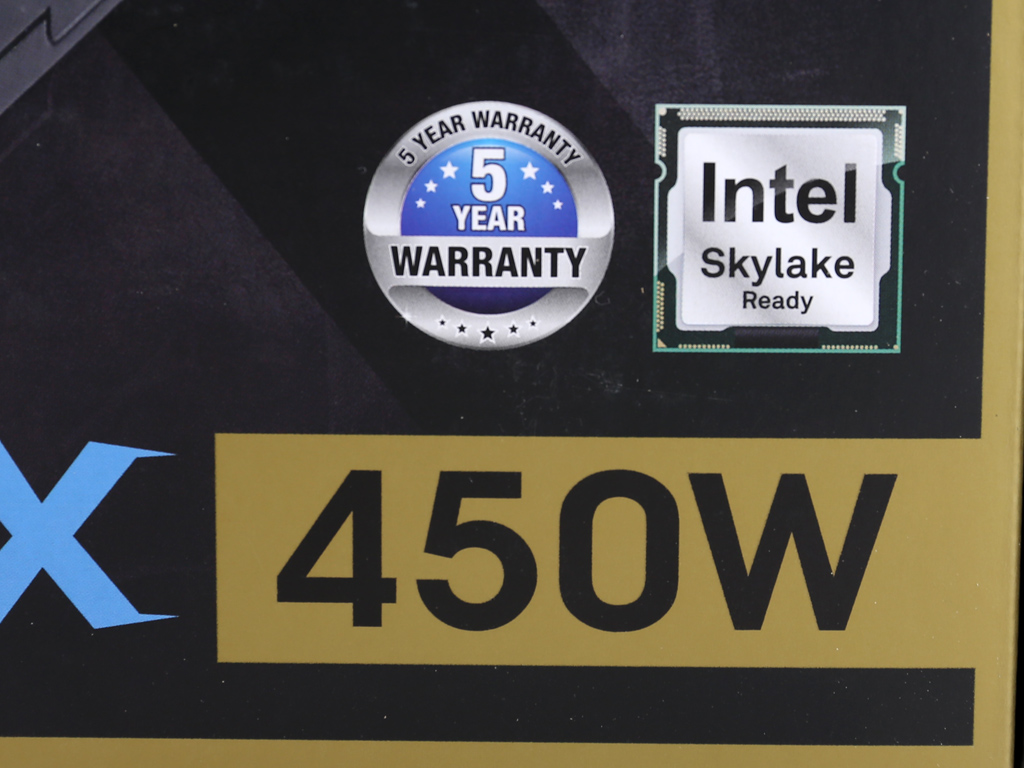

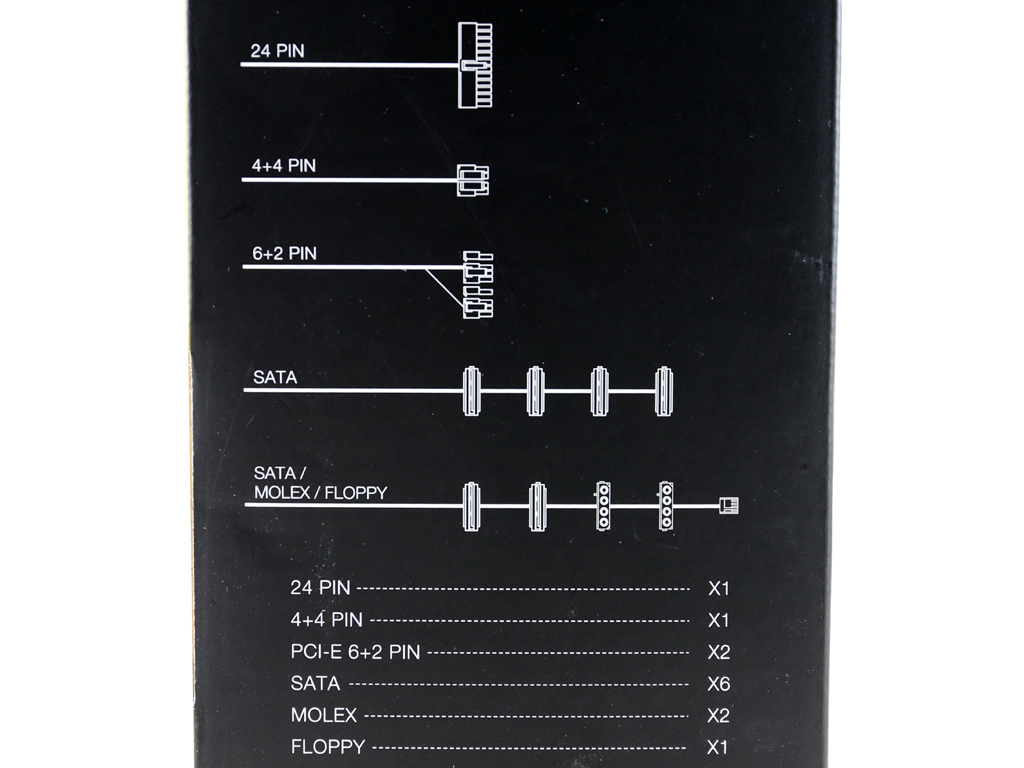








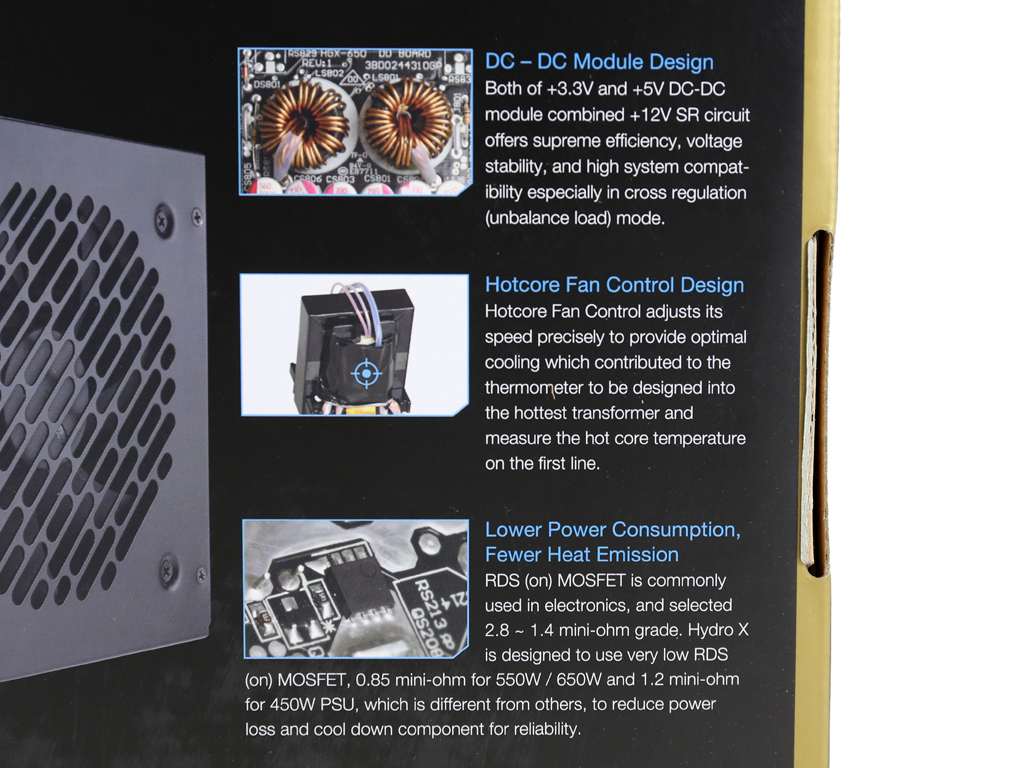
The box is relatively small. Up front, there's a photo of the PSU along with several badges depicting 80 PLUS Gold efficiency, the five-year warranty and compatibility with the sleep states (C6/C7) that Intel's Haswell CPUs introduced. Three more icons, located in the front, bottom-left corner, let you know the PSU includes DC-DC converters, Japanese electrolytic capacitors and ribbon cables.
On one of the two sides a diagram and list describe the available cables and connectors, and a little lower FSP provides information about the power cable that comes with the unit. Around back, there is another photo of the PSU, a features list and four photos showing some of the notable features. These include an efficient 5VSB rail, VRMs that regulate the minor rails, the thermal fan control that takes readings from the main transformer and the low RDS (on) FETs on the secondary side responsible for regulating the +12V rail.
Contents


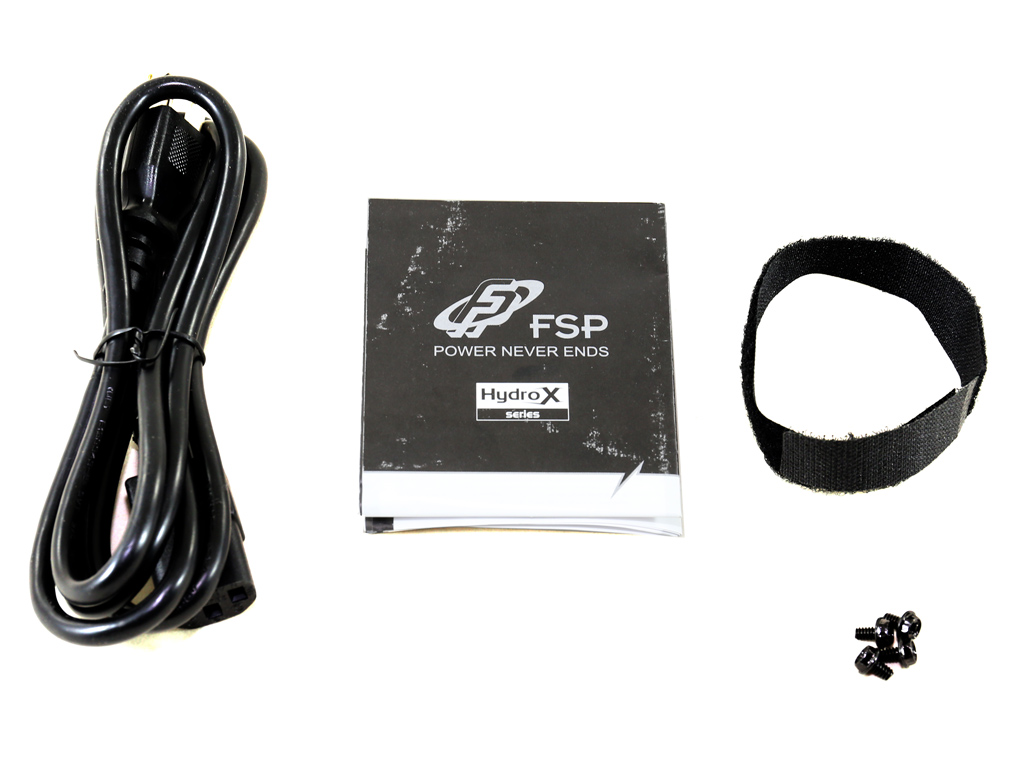

A piece of cardboard protects the PSU and its bundle inside the box. This isn't ideal; if FSP doesn't want to use packing foam, it should use instead a thick cardboard spacer. The bundle includes a small leaflet, an AC power cord, a set of fixing bolts and a Velcro strap.
We were surprised by the power cord in that we haven't seen such a thin one in a long time. Fortunately, this won't pose a problem for a low-capacity PSU like the HGX450 .
Exterior
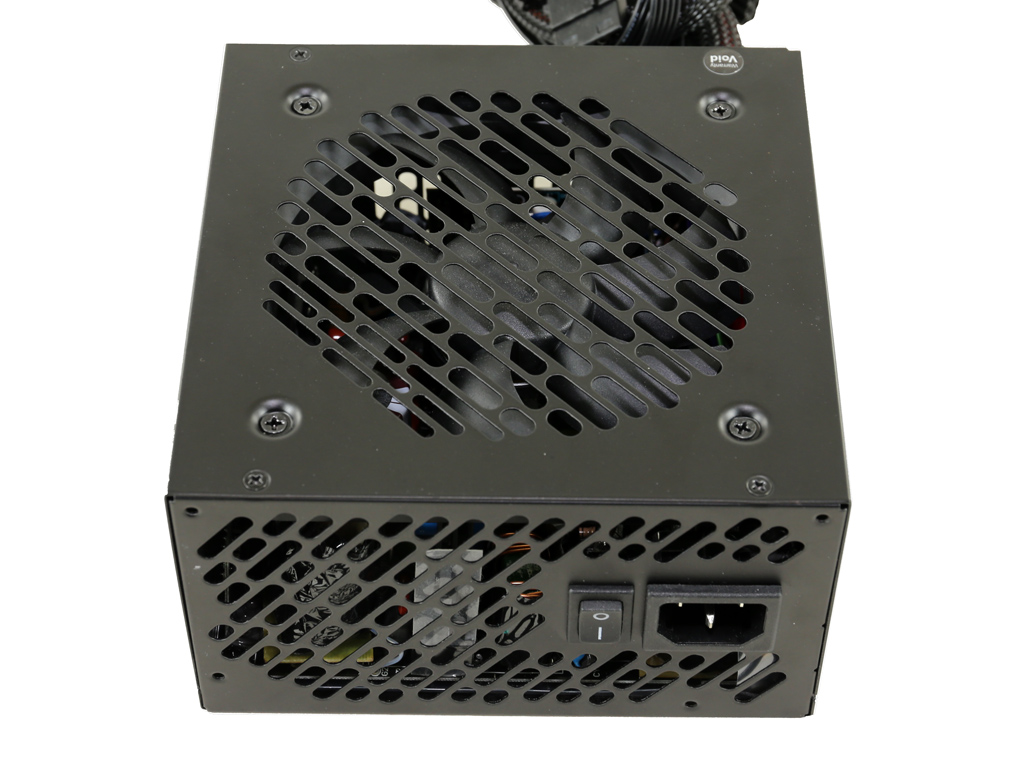
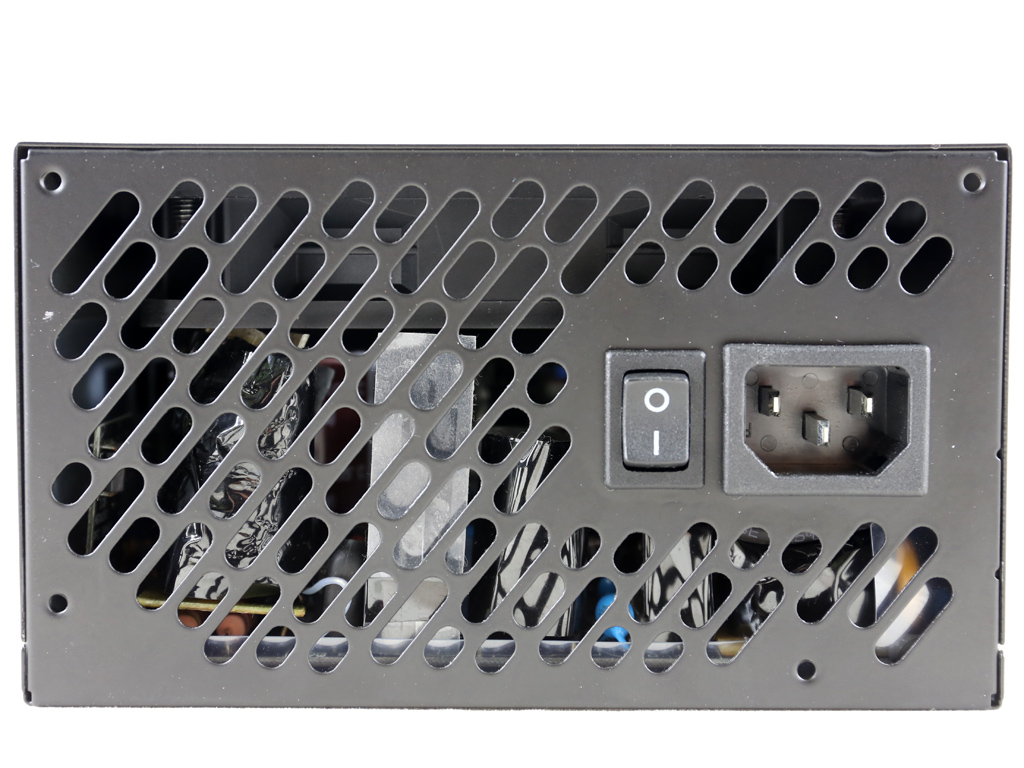


The finish looks good. It's glossy though, so it easily attracts fingerprints. The design is fairly unique, owing to a front exhaust grille that doesn't follow the typical honeycomb style. On the sides, small stickers indicate the series name. And there's a large specifications label on the bottom.



Around back, native cables exit the PSU's chassis through a large hole that isn't covered by a grommet. You'll find two small exhaust grilles as well, though we believe their purpose has more to do with style than functionality.


Compact dimensions make this unit a good choice for smaller chassis, where the PSU compartment has limited space. On the other hand, hardwired cables, though few in number, make routing more challenging. Many builders prefer fully-modular PSUs over non-modular ones, and the truth is that, with such a high MSRP, we expected the Hydro X to be semi-modular at least.
Get Tom's Hardware's best news and in-depth reviews, straight to your inbox.
Cabling

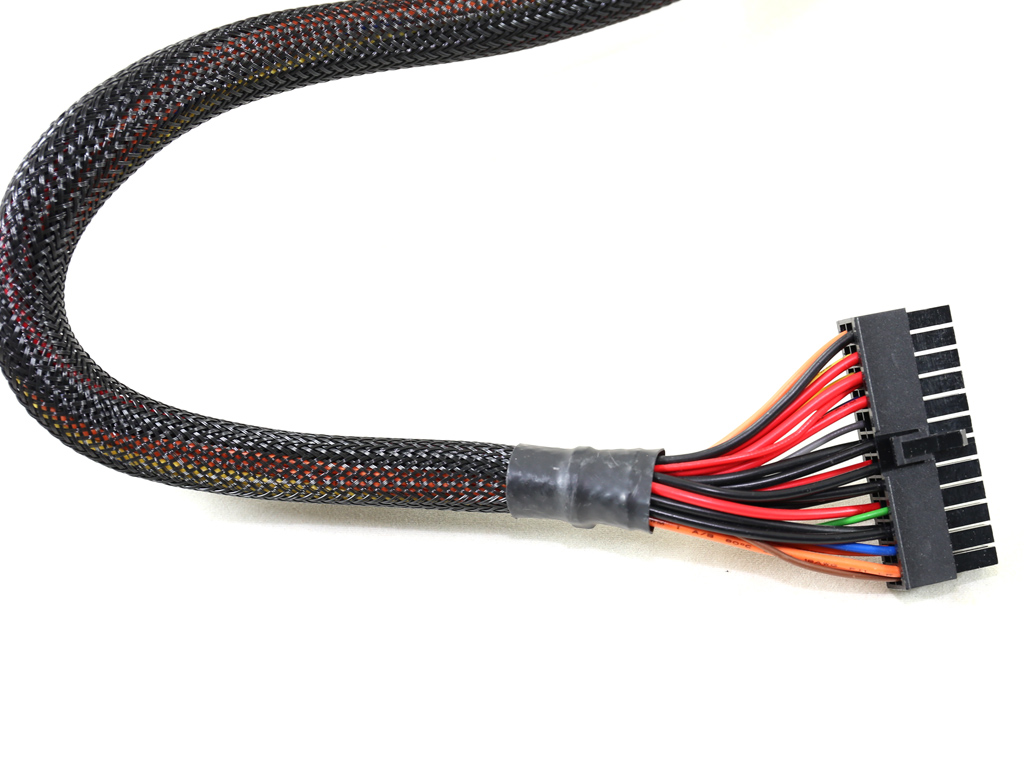

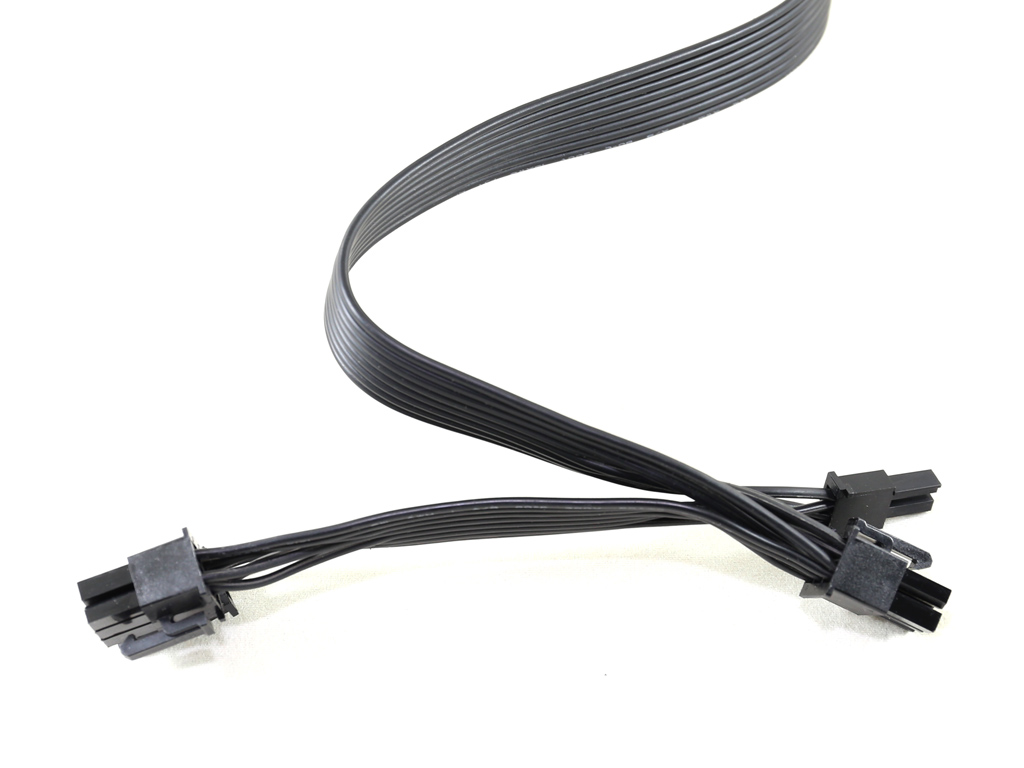


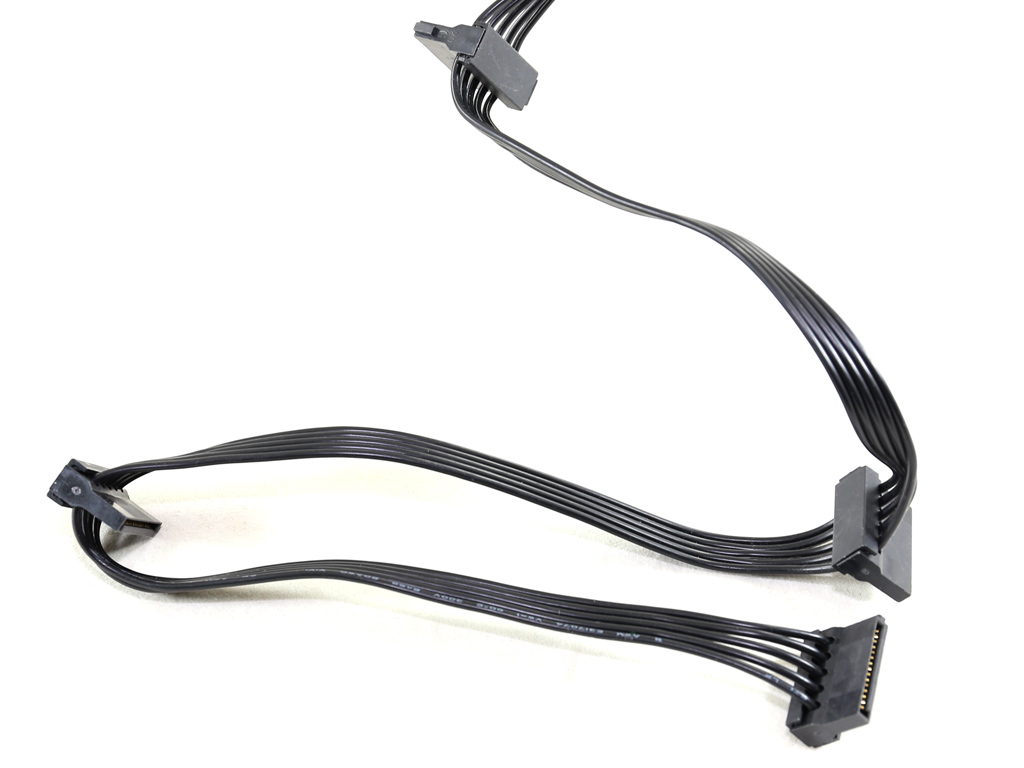
The main ATX cable is round and consists of colored wires. All of the other cables are flat and stealth. This is a somewhat odd combination. Normally, the 24-pin cable should have the same design as the others. Since it doesn't feature any extra ripple filtering caps, the main reason for this design must be cost-savings.
Current page: Packaging, Contents, Exterior And Cabling
Prev Page Introduction Next Page A Look Inside And Component Analysis
Aris Mpitziopoulos is a contributing editor at Tom's Hardware, covering PSUs.
-
powernod ReplyDo Hydro PSUs work underwater?
Yeah, they have to work underwater in order to camouflage themselves from Corsair's (PSUs) who dominate the water's surface!! :p
Or to pass through the Seasonic wall !!:lol:
ONTOPIC: Decent PSU from FSP, but only just decent!!
-
Aris_Mp it is hard to enter the US markets with Corsair and EVGA throwing one model after the other and in very competitive prices, however more variation is always welcome. If they lower significantly the price tags on these models then their marketing career will be easier.Reply
-
Dark Lord of Tech Hard to penetrate the EVGA lineups with their great prices on the higher end units. These need to be lowered to sell.Reply -
turkey3_scratch Is there any reason the 3.3V rail shows strange behavior when crossloading? Not that it's bad or anything, but in CL1 with heavy load on the 3.3V rail, the voltage is about 0.10V higher than CL2, where the 3.3V rail has minimal load, and voltage is typically higher.Reply -
turkey3_scratch Okay, just finished reading the review. Besides the disappointing transient response of this unit, and the failure to meet hold-up time, this is a good unit. But the price needs to drop to about $60 IMO if it wants to compete well. Currently it's priced the same as the Hydro G 650W, and the Hydro G is a no-brainer choice over this unit.Reply
It also concerns me a bit that the 5V rail voltage goes to 4.79V in your second transient response test at 50% load. This is all around also a bit disappointing, but it's not a very realistic transient load (unlike 12V which happens always while gaming), but I like the Japanese capacitors, the load regulation is fine, the crossload graphs all show good results; sometimes a lot of units screw up on those. It's nice to be able to see those different load patterns, something other reviewers should try to adopt. Ripple was very nice. -
joz ReplyHard to penetrate the EVGA lineups with their great prices on the higher end units. These need to be lowered to sell.
G2 is love, G2 is life. (G2 550W, about...eight of them....) -
basroil FSP almost had an excellent PSU until they screwed up big time on the transient response. Looks like the EVGA G2/ SuperFlower Leadex Gold is still king of the inexpensive PSUsReply -
Flying-Q Please stop referring to quality PSUs with low wattage as 'entry 'level' (in the article subtitle).Reply
Entry Level (adjective)
(of a product) suitable for a beginner or first-time user; basic.
"entry-level computers"
'Entry level' usually implies smaller feature set. In this instance the feature set of each of the models is the same other than the power output. Current generation computers need less power due to greater efficiency inherent in more recent designs of components. -
turkey3_scratch Reply17768395 said:FSP almost had an excellent PSU until they screwed up big time on the transient response. Looks like the EVGA G2/ SuperFlower Leadex Gold is still king of the inexpensive PSUs
I would like other testing sites to start adopting these tests, like Jonnyguru. I wonder how many units that normally pass stuff would fail.
Another funny thing is FSP just wrote a blog about the importance of transient response. :P
But also, a 3.3V transient response just doesn't happen in 2016, probably never will. A 5V one is also less common. -
basroil Reply17769266 said:But also, a 3.3V transient response just doesn't happen in 2016, probably never will. A 5V one is also less common.
ATX loading specs state a 9A transient on 12V (and 5V might have been there). Considering most modern PSUs are 12V only and then DC-DC for 3.3 and 5V, 12V transients are going to end up affecting the 5v and 3.3V lines too.